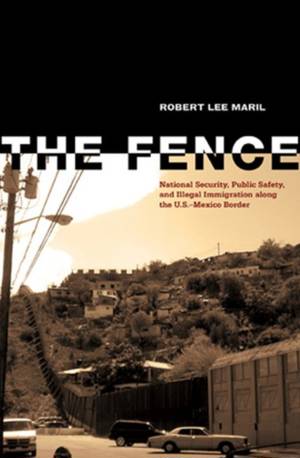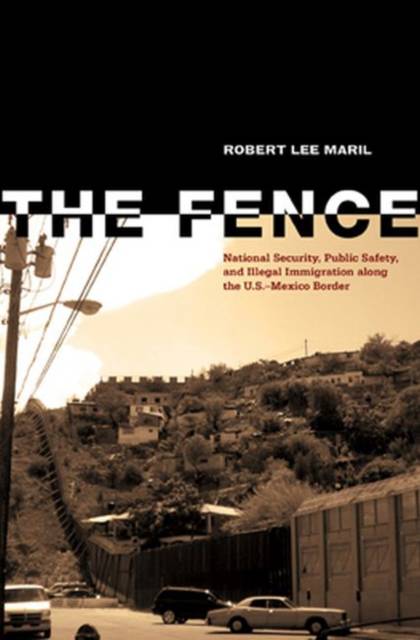
- Afhalen na 1 uur in een winkel met voorraad
- Gratis thuislevering in België vanaf € 30
- Ruim aanbod met 7 miljoen producten
- Afhalen na 1 uur in een winkel met voorraad
- Gratis thuislevering in België vanaf € 30
- Ruim aanbod met 7 miljoen producten
Zoeken
The Fence
National Security, Public Safety, and Illegal Immigration Along the U.S.-Mexico Border
Robert Lee Maril
Hardcover | Engels
€ 41,95
+ 83 punten
Uitvoering
Omschrijving
To the American public it's a 2,000-mile-long project to keep illegal immigrants, narcotics, and terrorists on the other side of the U.S.-Mexico border. In the deserts of Arizona, it's a "virtual fence" of high-tech electronic sensors, cameras, and radar. In some border stretches it's a huge concrete-and-steel wall; in others it's a series of solitary posts designed to stop drug runners; in still others it's rusted barbed-wire cattle fences. For two-thirds of the international boundary it's nonexistent. Just what is this entity known as "the fence"? And more important, is it working? Through first-person interviews with defense contractors, border residents, American military, Minutemen, county officials, Customs and Border Protection agents, environmental activists, and others whose voices have never been heard, Robert Lee Maril examines the project's human and financial costs. Along with Maril's site visits, his rigorous analysis of government documents from 1999 to the present uncovers fiscal mismanagement by Congress, wasteful defense contracts, and unkept political promises. As drug violence mounts in border cities and increasing numbers of illegal migrants die from heat exhaustion in the Arizona desert, Maril argues how the fence may even be making an incendiary situation worse. Avoiding preconceived conclusions, he proposes new public policies that take into consideration human issues, political negotiation, and the need for compromise. Maril's lucid study shows the fence to be a symbol in concrete, steel, microchips, and fiber optics for the crucible of contemporary immigration policy, national security, and public safety.
Specificaties
Betrokkenen
- Auteur(s):
- Uitgeverij:
Inhoud
- Aantal bladzijden:
- 384
- Taal:
- Engels
Eigenschappen
- Productcode (EAN):
- 9780896726802
- Verschijningsdatum:
- 1/03/2011
- Uitvoering:
- Hardcover
- Formaat:
- Genaaid
- Afmetingen:
- 165 mm x 241 mm
- Gewicht:
- 793 g

Alleen bij Standaard Boekhandel
+ 83 punten op je klantenkaart van Standaard Boekhandel
Beoordelingen
We publiceren alleen reviews die voldoen aan de voorwaarden voor reviews. Bekijk onze voorwaarden voor reviews.











